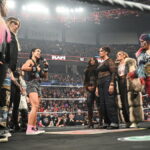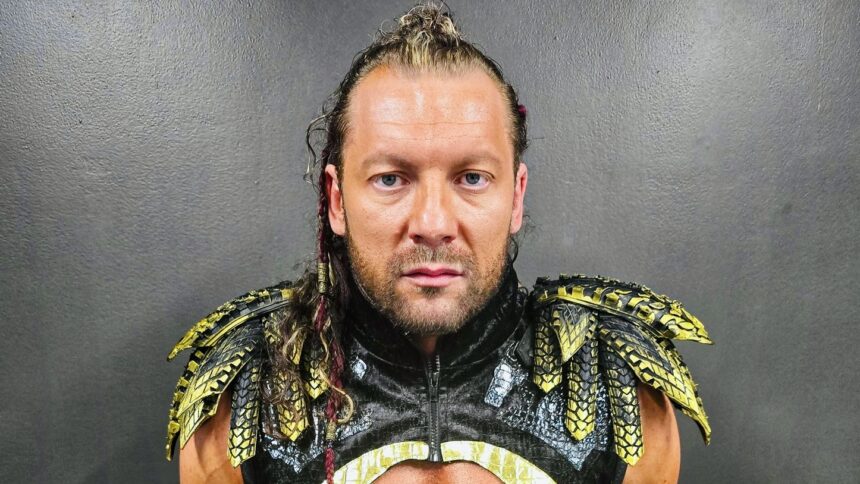Wrestling has undergone a dramatic transformation over the past decade, moving from a tightly protected industry surrounded by “cayfabe” to something that has become increasingly blurry between characters and performers. Few wrestlers understand this evolution better than AEW star Kenny Omega, who pioneered this change through projects such as “Being Elite” (BTE).
In his extensive conversation with producer Adi Shankar, Omega provided honest insights into how his relationship with wrestling audiences fundamentally changes and the creative challenges this presents to modern performers as well.
The ultimate expression of freedom
At its heart, Omega still sees wrestling as an unparalleled creative medium, calling it the “ultimate expression of freedom” in entertainment. This versatility is what first draws him to art form and continues to promote his passion.
“The beauty of wrestling is that you can actually do anything,” Omega explained. “And I think what we’re trying to prove with BTE is that we can become murder mystery. We can become horror. We can become comedies. We can become grumpy comedies. We can become rom-coms. We can do anything. We can animate. Very unique wrestling.”
This creative flexibility allowed Omega and his fellow countrymen to open new ground with “Being the Elite” in the YouTube series that helped wrestlers launch all elite wrestling and change connections with viewers. The show broke the “fourth wall” of wrestling, making it unprecedented for fans to access the character behind the character.
“You literally and figuratively broke the fourth wall,” Shankar observed Omega during the conversation. “It literally and figuratively made it okay to break the fourth wall. It allowed the industry to accept it. And now outsiders are welcome.”
When the curtains are too thin
This evolution has brought wrestling to new audiences and created fresh opportunities, but Omega has acknowledged that increased transparency has created an unexpected challenge for storytelling.
“What was once very protected is like Kayfabe, an insider in the industry who “don’t tell anyone anything behind the scenes.” that’s right. “It’s a thin paper curtain, right? If you really want to peek behind the curtains, open it for yourself.”
This new reality has fundamentally changed how audiences are involved in wrestling stories, especially when it comes to the dynamics of traditional hero villains.
“I think that’s why our fanbase is a little more sensitive than it should be these days. And because they’re part of our real life and they want to be our real life, the bad guys can’t be the bad guys,” Omega said. “So when they see us portraying these evil people, they are actually assuming that the evil extension is really the person we are really inside us.”
As a result, Omega says creating effective villains is becoming increasingly difficult.
“In a way, I can say that it’s almost a great thing. They believe I’m a terrible person because I’m doing these bad things, but now they believe they don’t want to support your show.
A balanced act
As wrestling grew into a more mainstream entertainment format, Omega has found himself navigating the complex relationship between creative expression and corporate responsibility, especially since becoming executive vice president at AEW.
“By becoming an EVP for AEW, we were now hooking what we did and said. If it wasn’t suited to the network’s preferences, or if it pisses people, fans, if they wrote a formal complaint, we could essentially be broadcast immediately,” Omega explained. “And that responsibility to our fanbase and the hundreds of people we hired at AEW, that’s a huge responsibility.”
This tension between artistic freedom and business constraints, as Shankar pointed out, reflects what many creators face when expanding their projects. “You’re going to be all the TV productions, including all these bells and whistles that you didn’t have before, but these things come in like this extra baggage.”
Despite these challenges, Omega is committed to pushing boundaries while celebrating the wrestling tradition. He emphasizes that there is still an aspect of business that remains private, regardless of increased transparency. There is particularly interpersonal conflict that it lacks an appropriate context for fans to understand.
“It sounds crazy for a guy who exposed so much in wrestling for BTE, but I think there are a lot of traditions in wrestling and etiquette that need to be respected at all times,” Omega said. “And I don’t think there’s any need to throw each other under the bus to people who don’t understand what we’re doing, whether it’s bloody between athletes and some performers.”
As wrestling continues to evolve into the age of social media and transparency increases, Omega represents the bridge between wrestling’s protected past and its open future.













